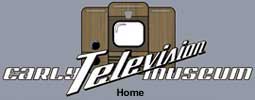Early Electronic Television 12AP4 RebuildingSome time Dave Johnson contacted Clinton Electronics in Rockford, Illinois about the possibility of rebuilding early electronic picture tubes. We sent an email to Randy Schroedl, describing the project:
Randy responded
Dave Johnson agreed to provide a dud 12AP4 for them to work with. After a few weeks, and several emails about sources for rebuilt guns and Pyrex stems, Randy reported on their progress:
Then, almost a year passed without any progress. In April of 2005 Randy again reported on their progress:
So, it appears that we are close to having a place to get early electronic tubes rebuilt. There are limitations to the type of tubes they can do. Only magnetic deflection tubes with necks about 35mm in diameter are possible, but this includes the 9AP4, 12AP4, and a number of British 7, 9 and 12 inch tubes. Later that month, Randy wrote:
In July, 2005 Randy informed us that the project had been put on hold, because the company didn't want continue to fund the experiment with no guarantee of success. Glass was located in Germany that Randy felt might solve the problem. The Early Television Foundation offered to pay the $800 cost for the glass to keep the project going. Randy wrote in July:
I replied that I was confident that collectors would pay $700-750 for a rebuilt early electronic tube. As a result, the glass has been ordered and the project is underway again. In February, 2006 Randy reported that the German glass had successfully been welded to the 12AP4 glass. An attempt will be made within the next few weeks to rebuild a 12AP4. After several attempts, Clinton was unable to keep the stem from cracking as it cooled, and determined that a custom stem would be required. So far, Clinton has been unable to find a stem at a reasonable cost. We have some glass tubing that was used in a previous successful rebuild of a 9AP4. This tubing is of an intermediate melting temperature, and can be welded to both the Pyrex shell and the soft glass stem. Clinton is considering trying this approach. Clinton has sold its rebuilding operation to Video Display Corp., and is no longer interested in pursuing this project. However, a French company, RACS, has recently been successful in rebuilding a Pyrex tube. Clinton did rebuild a number of soft glass tubes for use as substitutes for the 9AP4 and 12AP4. |
